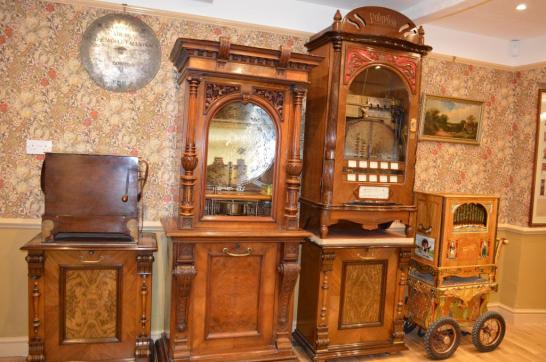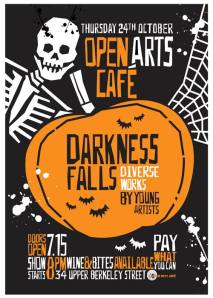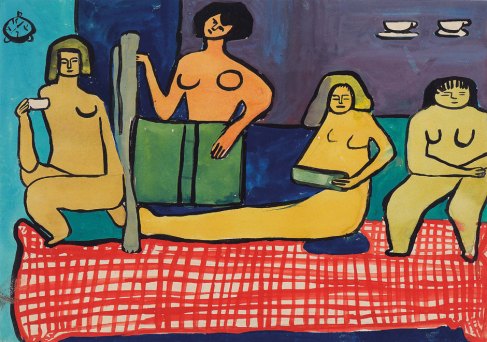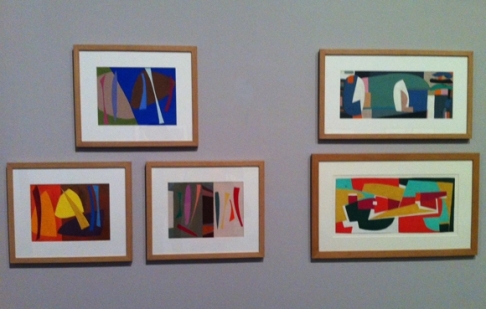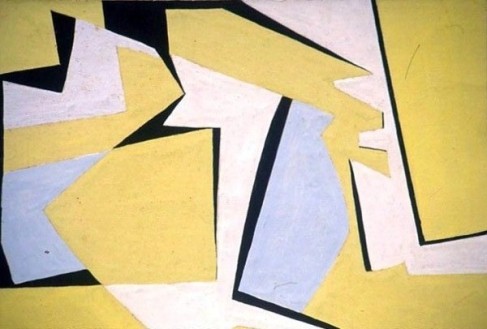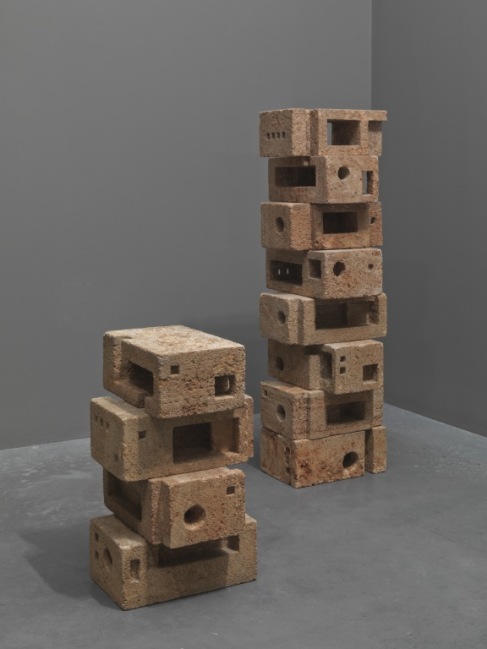In 2012, a Beirut-based Syrian civil engineer did something amazing for Syrian artists who have and are relocating to Lebanon. Her name is Ms Raghad Mardini and in 2011 she leased and restored a two hundred year old stable that had lain in ruins since the Lebanese civil war and transformed it into a beautiful gallery with living quarters. It is here in Art Residence Aley (www.artresidencealey.com) that she offers young Syrian artists residency, full board and even covers their living expenses so that they are free to pursue their work in a safe and creative environment.
I was lucky enough to be able to interview Ms Mardini and one of the artists that had previously had a residency in the gallery. Initially I was meant to interview two artists: Mohamad Labash and Rabei Kiwan, however, Mr Kiwan has since gone back to Syria and unfortunately we have been unable to reach him, which hints to the dire situation of many people in the Country at present.
The work Ms Raghad Mardini has done to raise the profile and support Syrian artists is commendable, and I’m sure we shall be hearing more about her and the artists in her gallery in the near future.
Interview with Ms Raghad Mardini
You studied for your Masters in Structural Engineering in Damascus University, was this your first experience in Syria ?
After my masters in structural engineering, I worked as a professor at the Intermediate Engineering Institute of Damascus University. During this time, I also worked in design and architecture. The “Light and Art House” I designed in Yafour was the highlight of my career – I still miss it to this day.
What was the Art scene in Syria like at the time?
The Art Scene in the nineties was very exquisite. Artists worked in their studios, they were very poor, but genuine art came out, few galleries in Damascus and Aleppo were organizing exhibitions regularly and there were few names that were successful. After 2000 there was a boom in economy, Syria opened its market and more money was spent on Art. It became fashionable to have one’s own collection and people started to have a general taste for art.
When did you interest in Art begin?
Art, however, is far more than my career – it is my passion. I spent years in the studios and ateliers of Damascus, breathing in the creative atmosphere and befriending countless artists. These artists and their strong spirits helped me survive a very difficult time in my life.
What inspired you to create Art Residence Aley?
After the situation in Syria deteriorated, around October 2011, thousands of Syrians fled to Lebanon, among them many young emerging artists. With the difficult conditions and emotional trauma, artists had to take available jobs in construction and in restaurants instead of creating art. Given the situation and my belief in the importance of art in hard times, the idea of the Art Residence in Aley (ARA) arose.
As a civil engineer why did you choose Aley as the site for ARA and had you known of it before?
I had stumbled across an abandoned stables in Aley, in the mountains outside Beirut. The stables were a relic from the Civil War. I was especially touched by a fruitless walnut tree standing sadly in the grounds. As a civil engineer, I saw the opportunity to transform the stables into something beautiful. To me, the stables and walnut tree symbolized the greater conflict in Syria. My country is ruined and in grave trouble, but it still possesses an inner beauty that I cannot ignore. With the right amount of love and energy, I knew I could revive the stables into something productive and new. And, in turn, this is what I hope Syrian art will do for its country.
How long did the project take from the initial idea to completion?
A whole year: May 2011-2012
What were the main challenges you faced in starting up this project?
The main challenges I faced starting up the project were financial and relating to management. I had no support, it was my personal initiative. I have financed the restoration of the historic stables and after one year, the idea came to me spontaneously and I started to receive artists. There was huge demand, I received 70 applications to participate while the space can only take 20 artists per year.
How do you find and contact the artists?
The artists themselves were volunteering to help me in the works in the space, like stretching canvas on frames, photographing the art works, organizing files, spreading the word to invite more talented young talents to participate. they even built a wall in the garden from wood tiles when we had our first exhibition in ARA in October 2012.
Was there any difficulty bringing them over to Lebanon?
The artists apply online through the webpage email, then we have a jury from artists and professors who help us choose the best projects based on their age, level of artistic work and area they are coming from.
I can imagine that many artists have endured and witnessed many things before they reach your door; Encountering people who have suffered through the ongoing troubles in Syria must have been heartbreaking, especially when you had memories of the country in more peaceful times. Were there any moments or stories that were exceptionally emotionally challenging ?
Some artists faced difficulty in coming to Lebanon since they had to join military.
What were the main challenges you faced in starting up this project?
Endless emotional stories, one artist arrived to Aley and slept for 24 hours, we were so worried about him, he woke up and told us how psychologically he was tired from the sounds of shooting he was hearing all day in Syria. Another artist talked how his journey from his village in the north east of Syria was through burned field and destroyed cities. It was all dark, it showed in his paintings. Another artist was very happy to find water in the space, in their area they lived for two months without water, another one said he never imagined he would be able to draw after his graduation. This is a lost generation of artists, torn between their fragmented country and their lost dream. They would love to continue their studies or travel abroad to get more experience. They had to take jobs away from their art as painters or waiters in restaurants in order to make their living. Their project is to regain their self confidence and feeling of security and to encourage them to make art.
What opportunities are available to the artists after their residency?
During the residency we try to connect the artists with galleries and organization than can support their work. We also try to connect them with art residencies abroad, or help them showcase in collective exhibitions so they can establish studios in Lebanon.
Do you keep in touch with the artists that have had residencies ? Can you tell us a little about where some artists are now?
Of course we always keep in touch with the artists. Artists call ARA a “home away from home”, a place where you feel connected and you always come back. It is a community where everyone support each other with a big sense of solidarity.
Who is currently staying at Art Residence Aley ?
Female artist Marwa Sara, a Syrian painter based in Austria since a year.
Each artist that comes to your establishment leaves one of their works for the private collection, what is your aim in this?
We are building our documented collection to tour the world and maybe a core to a museum in the future for works from the hard times.
How many have you accumulated since the beginning of the project?
37 artists until now, 37 works: painting, sculpture, photography, video art, performance and screen dance.
Is there a possibility of touring the collection around the world; I know many in the UK would be very interested in seeing the works that have come out of such pivotal moment in history.
We are thinking seriously of touring the collection and making the necessary contacts with museums in Europe for that.
I read you are planning to publish a book with these works. How is it coming along ? How and when will it be available to purchase?
We are collecting all material about artists, their statements, CV’s, photos of their works, art critics, press excerpts, in both arabic and english language. We are looking for funding to be able to print the book.
What are your hopes for the future of ARA?
I want to increase the capacity of ARA, internally and externally. Internally, there is an immediate need for better and more services to more Syrian artists. Over the next two years, I plan to start a number of small sub-projects in Aley. I hope to host a greater number of artists in weeklong plastic art or etching workshops. I also hope to add a cafe, where visitors can interact with the artists and buy their work. Dance classes will also be introduced to the community. Lastly, I will startup a resettlement fund for artists leaving ARA. This will provide essentials the artist needs to continue creating when they relocate to a new place. Externally, I hope to give artists greater visibility in Arab, British, European, and American markets. I already have a website, Facebook page, many exhibitions in Beirut, and numerous media links. The next steps for ARA are: exhibitions overseas and a book. In order to raise awareness and solidarity among the host population and foreign audiences, I am in the process of publishing a book about the artists of ARA and their work. I envision ARA as an inclusive space. It is a space that overcomes politics. It is an instrument that preserves Syrian culture and heritage and allows its art to flow powerfully into world. It is the only place in Lebanon where young Syrian artists can collectively grow strong again.
Thank you to Ms Raghad Mardini for taking the time to share your project with us.
Interview with Mohamad Labash
Mohamad Labash is one of the artists that has had a residency in the gallery. He was born in Daraa, Syria in 1989 and graduated from the Faculty of fine arts at Damascus university in 2012-2013, specialising in painting and drawing. His paintings are bold and courageous in their execution and depict his fascination with the unpleasant side of humanity. Mr Labash
When did you first decide to pursue art as a career?
It was not a decision, it is my passion since I was a child, I started to draw when my senses started to feel everything around me.
You studied in Damascus University, how did you find the course? Was it what you expected? Was there anyone who inspired you?
I joined the college in 2007. I wanted to learn how to be committed to work.Art is a personal research, it cannot be taught. Nature was my inspiration.
Which artists do you think have influenced you most in your work? And in what way?
I was inspired by Goya’s and Francis Bacon’s work. We have same subjects with different styles. They influenced my work.
Can you tell us about how you developed your style over the years?
My art is the accumulation of all Images in the visual memory over the year, art is an open possibility it can never be complete. We are always developing.
The personality of my painting started to grow from reality transformed into painting, the contradiction between beauty and ugliness, light and darkness, projected on pure human conditions.
I was attracted to show the evil in the human being and all the ugliness. I wanted to shock the viewer with part of his being, and reveal the darkness.
What is your creative process?
I’m against any routine. Each piece is unique, and style follows the idea, not the opposite. I cannot control the mood in which I draw, it comes like inspiration. I don’t prepare the painting, it is a pure spontaneous act.
What medium do you work in and why?
I work with oil and acrylic, mixed media on canvas.
You’re very skilled in the use of colour and composition. In your opinion what is the most important aspect of creating your Art?
It is my emotion. I studied the concepts of art, I use it as a tool to create my own specific and universal art style,
The last few years in Syria have been very tough, do you find the situation has influenced your work and if so, in what way?
The last period of my life was very hard. It has its influence on me, it is a continuation of many questions I was searching since the beginning. Even before this period the subject for my art was “violence”, so it confirmed my vision about human and evil. I could not work because of the difficult conditions. I left Syria to live in Beirut, but the place I live in now is not suitable for work.
How did you get involved with Art Residency Aley?
I got to know Art Residence Aley through friends. I wrote to them by email and sent them photos of my work and they accepted me in December 2013.
What are your plans for the future?
I got to know Art Residence Aley through friends. I wrote to them by email and sent them photos of my work and they accepted me in December 2013.
Thank you to Mohamad Labash for taking the time to share his thoughts with us
If you’re interested in helping or supporting the gallery and the Syrian artists you can donate to the project at:
http://www.zoomaal.com/projects/ara/1890?ref=4870839
Depending on the amount donated, you are awarded a piece of art, which in this situation, is also a piece of history in the making.
For more information:
http://artresidencealey.com/art/mlabash.html




